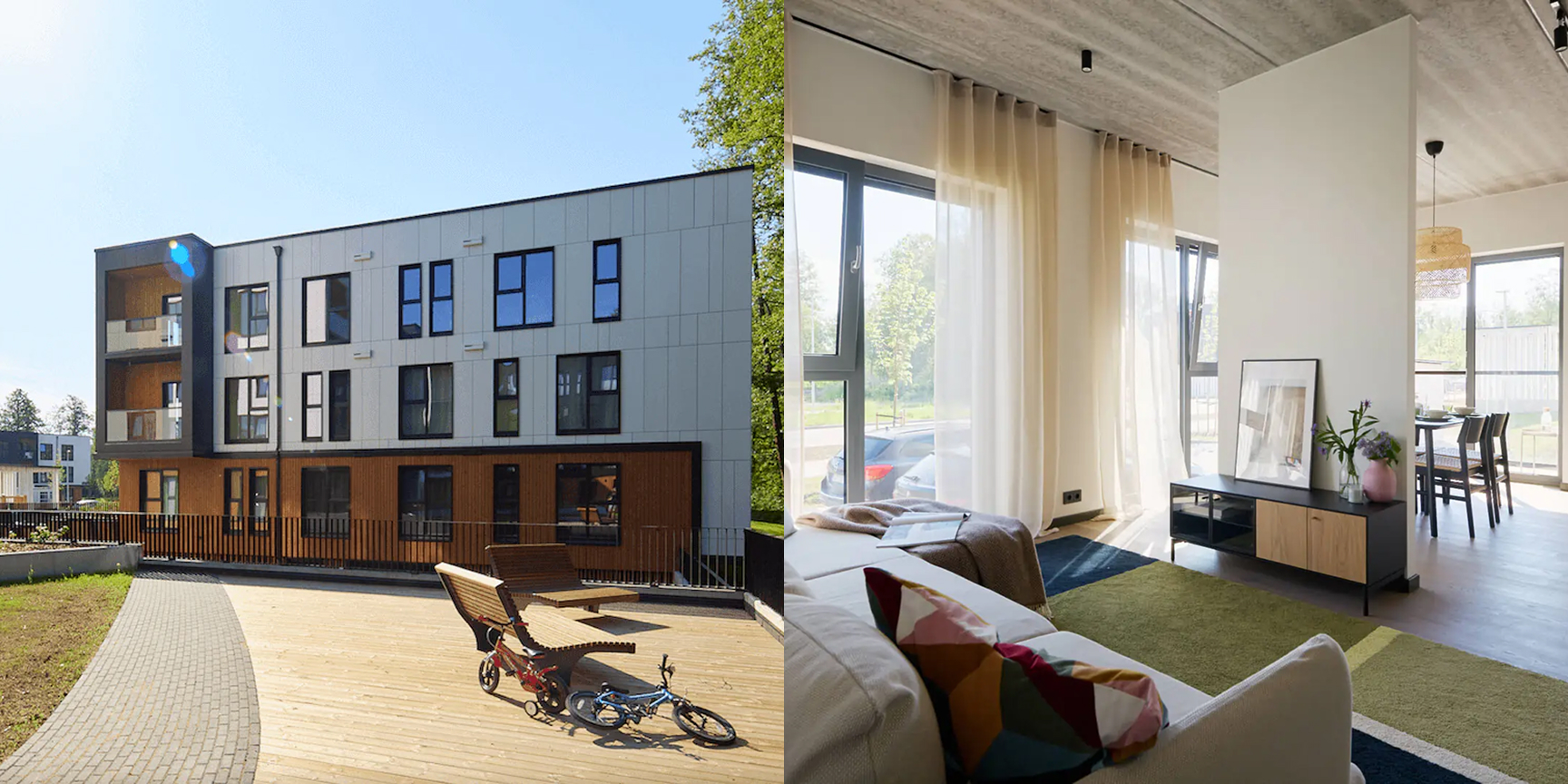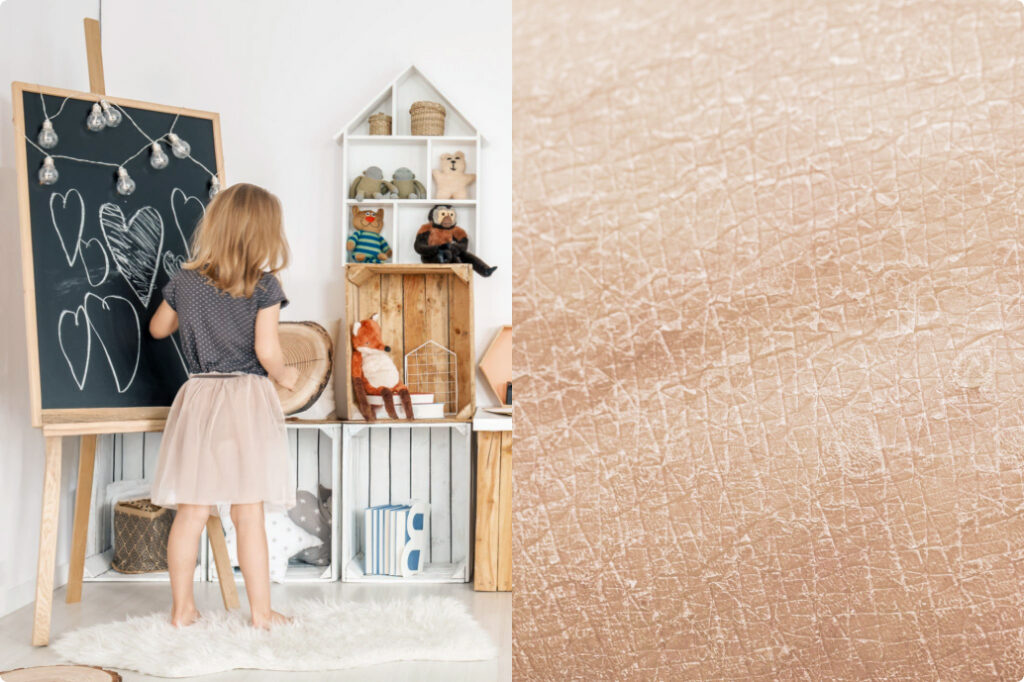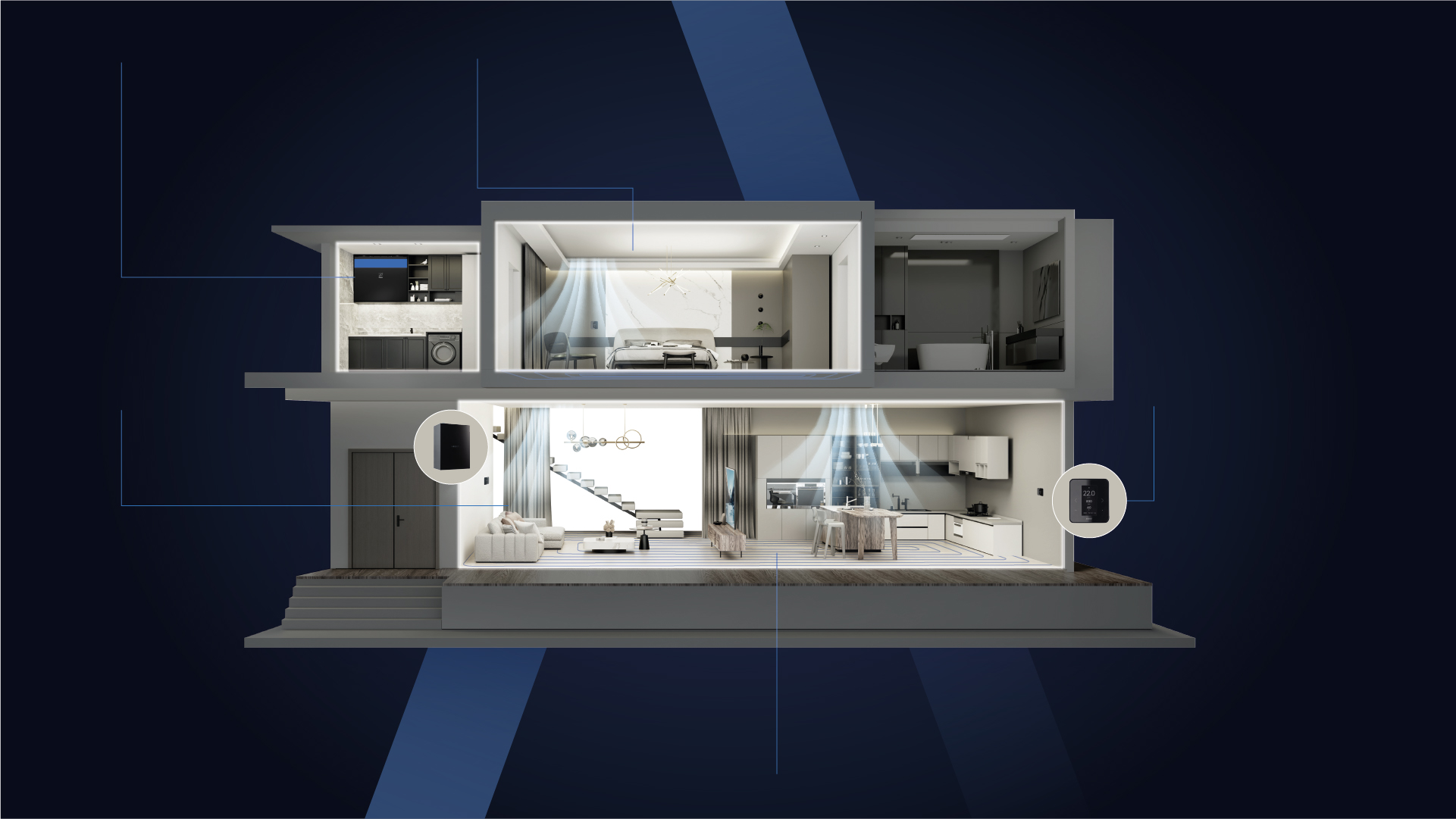Humidity levels play an important role in our indoor climate at home. Too much or too little humidity has a significant impact on our health and comfort. It’s all about that sweet spot.
The weather forecasts always talk about relative humidity, and if you use equipment to measure humidity at home, they will also give you the relative humidity level. Relative humidity is always measured and expressed as a percentage.

What should be the humidity level in your home?
A good humidity level in your home sits between 40% – 60%. In this range, people feel good and do not experience health and comfort problems. Humidity levels of 30% to 40% are still relatively well tolerated, but more sensitive people may already feel uncomfortable.
The range of humidity that is suitable for people:
- Less than 30%: Dry air that can cause dry skin and respiratory irritation.
Humidity levels of 30% to 40% are at the lower end of the comfortable range, but may still be suitable for many people. - 40% to 60% is the ideal humidity range for most people. This level of humidity is comfortable, reduces the risk of respiratory infections, and does not encourage the growth of mold and dust mites.
- Humidity levels above 60% can encourage the growth of mold and dust mites. It can also make the air difficult to breathe.
- tekst
It is important to understand that while a humidity level of 40% to 60% is generally recommended for the home, individual preferences and specific circumstances, such as the presence of certain health conditions, can also extend this range. Higher or lower humidity levels due to weather conditions may also be possible, but these occur short term and are in no way harmful or dangerous.

Where does domestic dampness come from?
Indoor damp does not just happen, it has specific sources. One of the main factors is our daily activities such as showering, cooking, washing and drying clothes. Even our breathing brings moisture into the home. The average family of four produces more than 10L of water in their home in one day. If there is no ventilation in the household, this amount of water quickly becomes a problem.
The weather also plays an important role in the level of humidity in the home. On a rainy day, the air is usually more humid. Moisture in the outdoors enters the home through open windows or if the home is poorly insulated. Also, if your ventilation system is not heat exchange ventilation, then you will draw in more humid air the rainy days.
Higher and lower humidity in homes during winter months
Homes in central and northern Europe become drier during the heating season. This moisture loss is due to our own activities and also to external conditions. Heating and ventilation remove moisture from the home. Without ventilation, however, dampness builds up in the home, which can cause even more problems.
When it comes to moisture, it is important to understand that the warmer the air, the more moisture it is able to absorb. As the outdoor temperature drops in winter, so does the amount of moisture in the outdoor air. The capacity of the air to hold moisture is reduced. Through ventilation, we draw cold, dry air into our rooms. We then heat it up, but we heat the already dry air, thereby amplifying its dryness.
The result is dry indoor air, which makes your skin itch, your eyes sting and your throat dry. This is a natural consequence of the combination of cold outdoor air and indoor heating.
Some homes may also experience dampness in winter. In winter, as a rule, the humidity in your home should not rise above 40%. If this happens, your home may have problems with ventilation. It is wise to address this problem, as excessive humidity can lead to mould growth, which in turn creates a whole new set of problems.
How to achieve a good home humidity level?
There are several ways to humidify your home. One of the best ways is to install a heat and humidity exchange ventilation device, which can return the moisture drawn out of the air in your home back into the air that is blown in.
This process is done through a special pleastic heat and humidity exchanger that is made from antibacterial materials and won’t bring bad smells or contaminated air back into your home. We have explained how these exhangers work in more detail in our blog.
In many homes it is not possible to add a ventilation unit. If you already have a new ventilation unit in your home that does not return moisture, then replacing it can seem unreasonable and expensive.
In such cases, it makes sense to control moisture levels with humidifiers. There is a very wide range of models available, but two things should be considered when making your choice. Firstly, choose a humidifier that is appropriate for the size of your home/room – this way you can be sure that it will be able to humidify your living space.
Another important nuance is that the humidifier does not work by ultrasonic sound. A number of studies have shown that ultrasonic humidifiers create particulate matter, or fine dust, in your home by breaking down minerals in the water, which then fly with the water vapour in your living space as dust.
The water evaporates away but the dust remains. Fine dust has serious effects on human health because these tiny particles can penetrate through your nose hairs directly into your lungs and bloodstream. ONLY distilled water should be used in ultrasonic humidifiers.
The effects of humidity on our health

If we have low levels of humidity in our homes, we feel the effects quite clearly. Dry air first makes our skin dry and we start to itch all over our body. Scaly patches can also appear on the skin – dry air will affect children first because they are more susceptible to it.
If we have low levels of humidity in our homes, we feel the effects quite clearly. Dry air first makes our skin dry and we start to itch all over our body. Scaly patches can also appear on the skin – dry air will affect children first because they are more susceptible to it.
Our respiratory and ocular mucous membranes work best at a certain level of humidity. A review published in the journal Aerosol Science and Technology discussed how environmental factors, including humidity, can affect respiratory performance. Low humidity can dry out these barriers, making them less effective at trapping and eliminating pathogens. In other words, we are more susceptible to disease when humidity is too low.
On the other hand, too much humidity indoors leads to other kinds of problems. High humidity creates an ideal environment for mold growth, which can spread to walls, ceilings and other surfaces. This not only damages our homes but also our health. Mold is often accompanied by allergic reactions, asthma exacerbations, respiratory infections and various irritations. Mold also suppresses your immune system, which makes you more likely to get sick.
In addition, excess moisture also encourages the formation of dust mites. Although dust mites themselves are not harmful, their droppings can be allergens for many people, causing a variety of health problems.
Ventilation system helps keep humidity levels healthy

Proper ventilation is key to maintaining healthy humidity levels. It ensures a constant flow of air, preventing excess moisture from building up or helping to bring moisture back in when the air is too dry.
Traditional ventilation methods, such as opening windows or using extract fans, can help to some extent. But in our climate, keeping windows open through the winter is not feasible.
Airobot’s smart ventilation devices can help to maintain a healthy indoor climate at home. These devices are equipped with humidity, CO2, fine dust, VOC and temperature sensors and they automatically regulate airflow to ensure a near-ideal indoor environment.
Airobot devices can detect when humidity levels exceed the desired range and increase ventilation to bring them back to normal. In the drier months, Airobot’s humidity and heat-adjustable ventilation system helps to keep humidity levels at optimum levels, bringing moisture generated in the home back into the rooms.
If the natural humidity loss in some homes is too high, Airobot ventilation units can be fitted with a central humidifier as an option to ensure healthy humidity levels.


